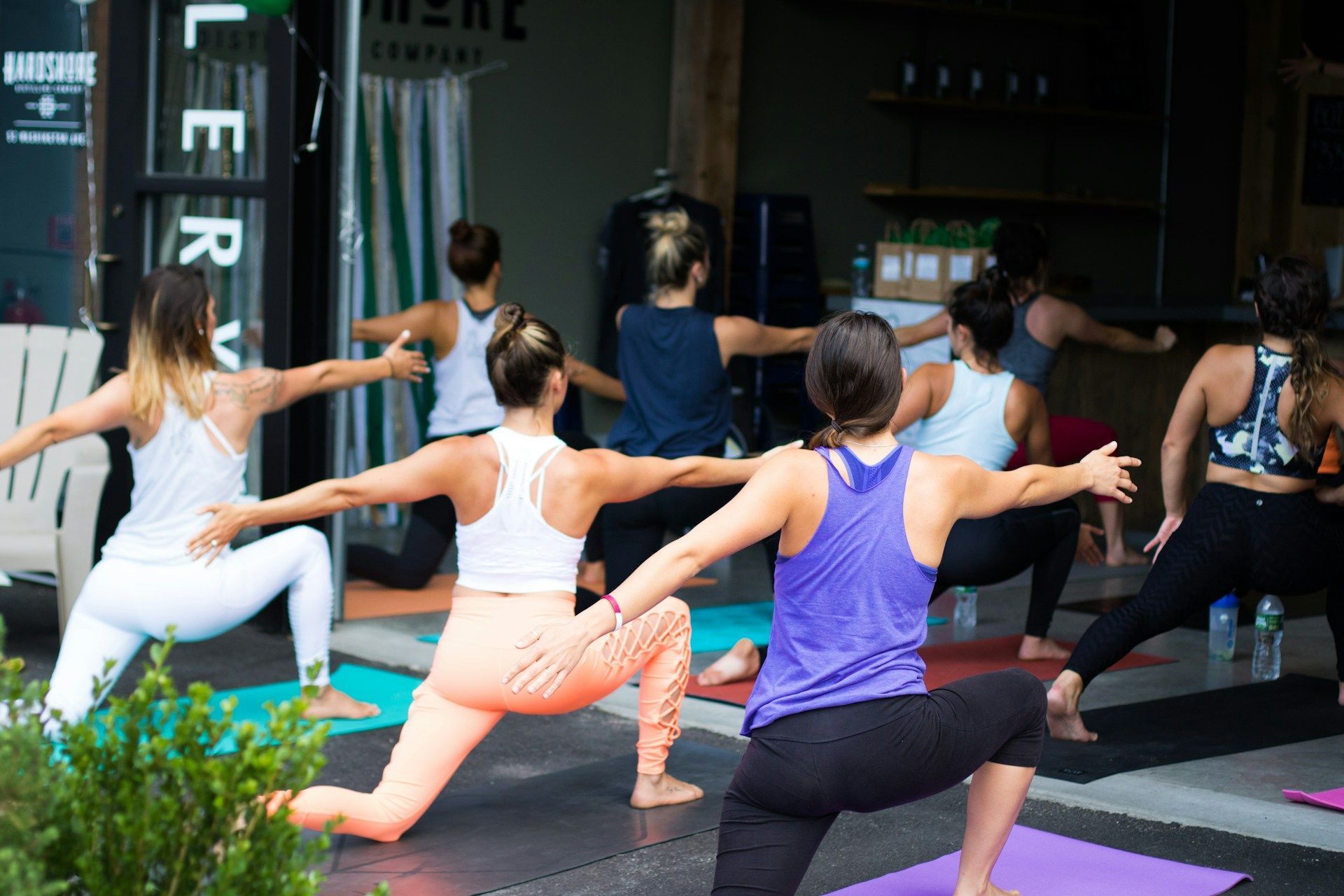Healing Through Talking to Your Mat: Filling the Emptiness
Feelings of emptiness are common in recovery, but what if you shift how you interpret them?
Picture a clear, empty glass. Is that glass achingly lonely? Is it frantic, desperately seeking something, anything to fill it? Or is it complete in its own right, solid, true to its form? Is it not empty at all, but full of possibilities, ready to hold anything from fresh mountain spring water to a handful of sun-sweetened blueberries?
If you’ve struggled with addiction or other mental health issues as I have, you’re probably familiar with the feeling of emptiness. It’s a soul-deep, profoundly uncomfortable emotion, and it can quickly drive you back into old, maladaptive patterns as you flee from it in terror.
However, there’s a different path, and talking to the mat can illuminate the way. Instead of running from emptiness, learning to embrace it can be the most empowering thing you ever do and a potent step in your healing. It’s not an easy scramble, by any means, and definitely not for the faint of heart. Understanding what to expect from someone who has been through it may make it less frightening. Here’s what I’ve learned on my journey, in hopes it helps you.
Emptiness and Addiction
Very few people talk about this aspect of addiction recovery — what, exactly, are you supposed to do with all your newfound time? Withdrawal doesn’t only set off a host of physical symptoms but leaves you with gaping holes in your schedule. The hours that once seemingly flew by sitting at the bar or arranging for your next fix now stretch before you like a long, echoing hallway of emptiness. If you’re not using, what, exactly, are you supposed to do?
This reality is why inpatient treatment programs often keep residents busy with a host of programs, from physical exercise to group therapy. However, let’s be real. I’ve been alive for 53 years, and never have I ever had the freedom or the resources to enroll in such a facility, much as I could have benefited from it. Unfortunately, my situation is far from uncommon in the United States.
Failing to plan for all this empty time is one reason why those going sobriety alone so often fall off the wagon. I can’t emphasize enough how crucial it is to find a way to fill those empty hours, and make it something pleasant, something that you love, something that you look forward to as much as using (or at least almost). Saying, “I’m going to quit drinking, spend more time at work, and embark on an MBA program,” can set you up for relapse.
Your substance of choice is an easy reward — earning a degree, not so much. When stress makes temptation call, you need something that soothes your soul to keep you from the pill or alcohol bottle.
For many people, socializing fits the bill nicely, which is why programs such as Alcoholics Anonymous and Narcotics Anonymous are so beneficial. These programs are incredible gifts and now offer both online and offline meetups for greater inclusivity. AA even recently launched an app, allowing you to connect and heal with others in recovery nearly any time of the day or night from wherever you are in the world.
My path was a little different, as I’m older and autistic, albeit late diagnosed. However, back in my day, going to AA meant church basements lit by harsh fluorescents, lined with hard metal folding chairs, and hazed with cigarette smoke — a sensory nightmare, in other words. It’s admittedly difficult for my nervous system to let go of old negative associations, so I went a slightly different route.
My early private practice, which consisted of hours of restorative yoga and meditation, eventually transformed into today’s Sober Saturday live stream. Originally, that practice was just my way of filling the empty hours that drinking used to occupy. Nowadays, I simply create another safe space for those healing from addictions — or anyone who simply wants to show their nervous system a little love and TLC at the end of a tough week.
The point is that you must find something you absolutely love to fill that space. Going to meetings is one option. Practicing yoga is another. Maybe, for you, it’s an uninterrupted hour to play your favorite video game or walk with a loved one in nature. Spending your newly sober time doomscrolling your phone is like issuing an open invitation to those old, maladaptive signaling patterns in your brain — fill them with activities that make your heart smile instead.
Emptiness and Letting Go of Delusional Thinking
Much as I hate to admit it, it’s true — I have behaved narcissistically. I have behaved neurotically. I have behaved impulsively, immaturely, and irrationally. While I have never been diagnosed with a personality disorder, I attribute that fact to a lack of financial resources, not symptoms. Although I no longer believe I would meet the diagnostic criteria today, I have no doubt I would have in early adulthood. I was a mess.
Please let me emphasize that I am not a mental health professional, just a fellow soul on a healing journey. However, I’ve studied such disorders from both an academic point of view and a therapeutic one. Watching role plays was a crucial element in my recovery. As an undiagnosed autistic person, I was always aware that much of my outward behavior was an act to fit in. What I didn’t recognize was that the patterns I learned in childhood, the patterns I had mirrored, which I always believed reflected the “right” way to act, were, in fact, highly toxic.
Not only was my whole life a lie, it was a shitty, damaging one that harmed other people around me. Yeah. That was a pretty sobering realization to go through alone. The guilt still overwhelms me at times. But at the time, I had no one to help me process this revelation, which may have actually been beneficial. I want to please and be accepted so badly, I’m highly suggestible, and what I needed was to figure out who I was without the influence of others.
Guess what? Coming to grips with the fact that your beliefs are irrational and that your behavior has been deplorable can also trigger deep feelings of emptiness. Discovering much of your life has been a lie, and a harmful one at that, is probably the toughest realization anyone can face, which is why I suspect so many people run from quiet, contemplative practices like yoga. It’s like that scene in “The Neverending Story” where the hero has to look into a deadly mirror, one that no one has ever survived looking into — because it forces you to look at your true self. What if you don’t like what you see? What if there’s no one there at all?
To thoughts like that, I say this: If you don’t like what you see, guess what? You have the power to change that. In fact, you’re the only one who can, and I’m living proof that if you want to heal, you can find a way, even if you lack the resources for an intensive inpatient treatment program or even weekly therapy.
If you don’t see anyone at all in the mirror, go back and reread the first paragraph of this article again. You are that empty glass. What if you reframed that feeling of emptiness, sensing it not as loneliness, not with panic, not as a hole you need to fill with any old stuffing to keep from falling in? What if you instead view it the way a painter might view a blank canvas? That “empty” space is yours to fill however you like, a prospect to regard with joy, not fear or anxiety.
You do have the power to reframe your feelings. Did you know that anxiety and excitement actually produce similar physiological effects? That’s why some people can’t get enough of jumping out of airplanes. You can reframe your feelings of emptiness the same way you can reframe fear as anticipation. Instead of considering this sensation as signifying your life is meaningless, missing something, look at it as an invitation to fill that blank canvas with the rich and meaningful life you crave and deserve.
Your mat is the perfect place to dig into this transformative work. It’s a judgment-free zone where you can work through all the difficult emotions that might come up, including emptiness. I’ve ugly-cried into my bolster more than once, and I’m sure I’ll do it again. Guess what? Doing that is a heck of a lot better than hitting the bottle and starting a fight with people I love.
Filling the Emptiness by Talking to Your Mat
Feelings of emptiness are common during recovery from addiction and other mental health issues. While emptiness isn’t pleasant to experience, you can reframe how you look at it. When you do, you’ll notice how you feel begins to shift from negative to positive.
As with all true healing, this work takes time. I can only speak from personal experience, but for me, gentle, restorative yoga and meditation work. You might find other ways to fill the emptiness as well, such as support group meetings, healthy hobbies, or simply spending time with the people you love the most. Talking to your mat is always a good first step to get mindful and contemplate what will work best for you as you prepare to transform this “blank canvas” portion of your life into a glorious masterpiece.











